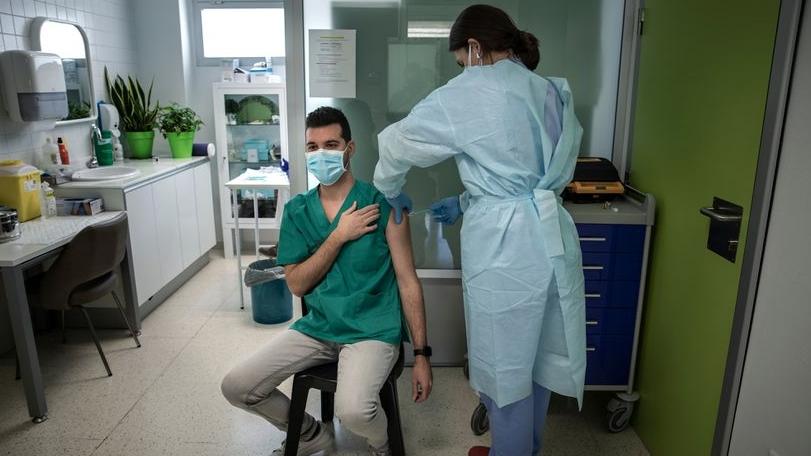Regional authorities are hoping to make up for some of the time that was lost when the use of the British-Swedish vaccine was temporarily halted over health concerns
The temporary suspension of the use of Oxford-AstraZeneca’s Covid-19 vaccine has considerably delayed the pace of vaccination in Spain. Last week, 666,978 shots were administered – some of them first doses, some of them second ones – representing a 25% drop from the previous week, according to Health Ministry data based on regional statistics.
Spain is resuming the rollout of the AstraZeneca vaccine on Wednesday, and regional authorities are hoping to make up for some of the time that was lost while countries waited for an announcement by the European Medicines Agency regarding the safety of the vaccine, following isolated reports of blood clots among recipients.
Unlike most other EU countries, Spain only provides vaccination information about residents of care centers, but not about other priority groups such as adults 80 and over who do not live in care facilities. Residents of these homes are now considered to be fully immunized, as the national average stands at 97.8%.
The pace of vaccination in Spain is very similar to the EU average, reflecting the fact that all countries have received similar shares of doses through the European drug purchase system. The most recent data from the European Centre for Disease Prevention and Control (ECDC) shows that 10.4% of the EU population has received one dose, and 4.5% has received both. These figures include all three vaccines currently authorized for use in the EU: Pfizer-BioNTech, Moderna and Oxford-AstraZeneca.
In Spain, these percentages are nearly identical: 10.4% and 4.6%. By comparison, Finland has given around 15% of its population their first dose, while only 1.9% have had both. In Hungary, the percentages are noticeably higher, 17.9% and 5.3%, but that is because authorities there are also using Chinese and Russian vaccines that the rest of the EU has not authorized.
Although Spain does not provide disaggregated data, the ECDC shows that in countries that do, 54.4% of the 80-and-over population has received one dose, while 23.2% has received both. Given the similar figures across most European countries, it is likely to be in the same range in Spain.



